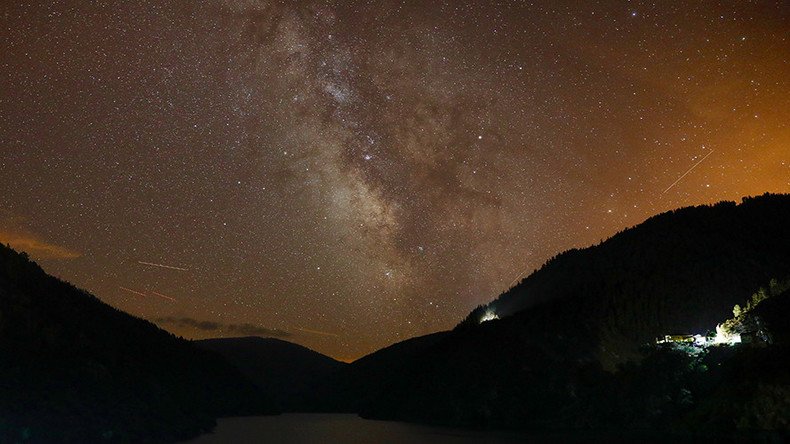Black hole 100,000 times bigger than sun discovered near center of Milky Way

A new kind of black hole has been found at the centre of the Milky Way – a find that may help explain the evolution of the phenomena.
In research conducted by Japanese astronomers using the ALMA Observatory in northern Chile, a black hole 100,000 times the size of our sun was found within a molecular gas cloud. Its relatively small size means that it is the first to be identified as an intermediate-mass black hole (IMBH).
Self-teaching neural networks help find super-fast stars traveling from mysterious epicenter of Milky Way https://t.co/lSuGPrCnUU#spacepic.twitter.com/phOf4s6yDk
— RT (@RT_com) July 9, 2017
Professor Tomoharu Oka of Japan’s Keio University believes that black holes with masses greater than a million solar masses are at the centre of all galaxies and are essential to their growth. The origins of supermassive black hole, however, remain a mystery.
"One possible scenario is IMBHs – which are formed by the runaway coalescence of stars in young compact star clusters – merge at the centre of a galaxy to form a supermassive black hole,” said Prof Oka.
Using the ALMA telescope, the team observed the cloud more than 195 light years from the centre of the Milky Way. In findings published in the journal Nature Astronomy, Prof Oka then used computer simulations to show the high speed motion of the gas cloud, which the team concluded was a sign that it is surrounding a black hole.
#NASA analyzing eerie whistling sounds coming from space (AUDIO) https://t.co/iXgCXmhj3Khttps://t.co/jM0uPlOTvc
— RT (@RT_com) July 18, 2017
"Based on the careful analysis of gas kinematics, we concluded a compact object with a mass of about 100,000 solar masses is lurking in this cloud," Prof Oka added.
The IMBH is the second-largest black hole discovered in the Milky Way next to Sagittarius A*, which is 400 million times the size of our sun.
According to theories, the Milky Way should be home to about 100 million smaller black holes, but only 60 have been found.
Speaking to the Guardian, Brooke Simmons of the University of California in San Diego said small black holes occur when stars die, making them fairly common.
“We think some of those black holes are the seeds from which the much larger supermassive black holes grow to at least a million times more massive. That growth should happen in part by mergers with other black holes,” he said.












